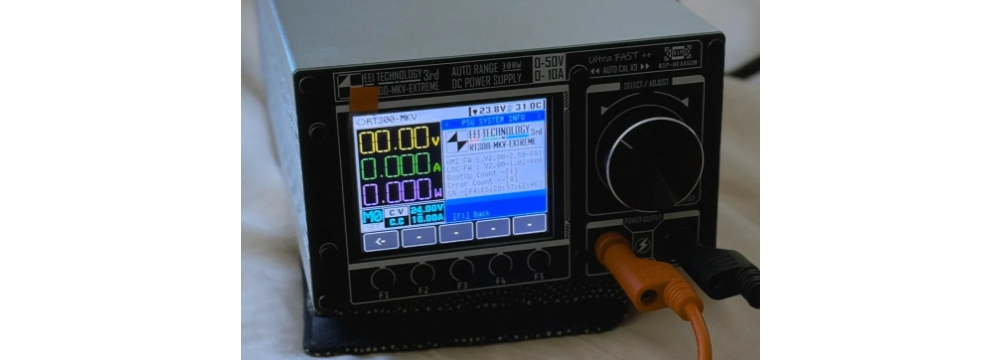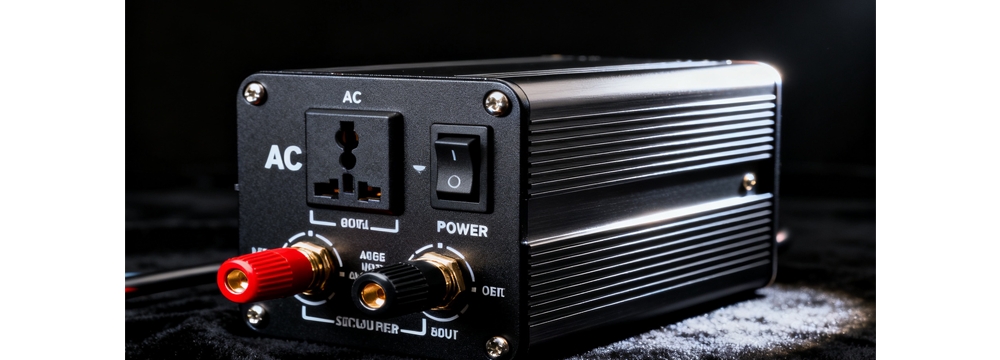In scenarios such as electronic repair, laboratory testing, and DIY electronic projects, an adjustable power supplyserves as the "core hub" for controlling circuit power supply. However, most people only focus on surface parameters like "how many volts" or "how many amps" when purchasing, while ignoring hidden performance and adaptability. This not only wastes money but may also lead to distorted test data and damaged components. Today, we will first break down 4 easily overlooked purchasing pitfalls from a popular science perspective to help you establish a scientific purchasing logic. Finally, we will attach brand recommendations for different positioning to facilitate selection based on your needs.
I. First, Understand These 4 "Uncommon Pitfalls" – They Affect Usage More Than Parameters
Pitfall 1: Trusting Only Nominal Ripple and Ignoring Actual Load Performance
Ripple refers to the small fluctuations in the output voltage of a power supply, which directly determines the "purity" of the power supply. For precision scenarios such as capacitor testing and sensor calibration, excessive ripple can cause data deviations; when powering sensitive chips, it may even lead to circuit crashes.
Many low-cost power supplies claim "ripple ≤ 10mV," but this is mostly a test value under no-load conditions. Once a load is connected (e.g., powering a motor), the ripple can soar to over 20mV. The reason is that inferior power supplies omit the "multi-stage filter circuit" and only rely on simple capacitor filtering, which cannot stably suppress fluctuations.
Correct Approach: Prioritize products marked with "load ripple" (e.g., "ripple ≤ 8mV under 2A load"). If your budget is limited, ask the supplier to provide actual load test data to avoid being deceived by "no-load nominal values."
Pitfall 2: Blindly Pursuing "High Power" and Ignoring Power Density and Heat Dissipation
Many people think "the higher the power, the more useful it is," but they fail to consider two key issues: first, the balance between power and volume (i.e., "power density"), and second, the heat dissipation capacity during continuous operation.
Low-cost high-power power supplies often adopt inefficient heat dissipation designs to cut costs. After half an hour of operation, the temperature exceeds 60°C, triggering overheating protection. On the other hand, overly la
rge power supplies take up a lot of space on laboratory workbenches or repair tables.
Correct Approach: Choose power based on "actual maximum load + 20% redundancy" (e.g., if you need 3A current for daily testing, a 5A power supply is sufficient). At the same time, pay attention to the "power density" parameter (e.g., "output power ≥ 100W per liter of volume") and check the heat dissipation hole design – honeycomb or grid-shaped heat dissipation holes have a heat dissipation efficiency 30% higher than a single heat dissipation slot.

Pitfall 3: Underestimating Protection Functions – No "Safety Net" for Equipment
The protection functions of an adjustable power supply are not "add-ons" but "safety valves" – such as reverse connection protection (to prevent equipment damage due to reverse positive and negative connections), overcurrent protection (to prevent excessive current during load short circuits), and overheating protection (to prevent power supply damage due to overheating).
Many entry-level models only mark "overvoltage protection" but actually lack reverse connection and overheating protection. There have been cases where users directly burned test motherboards worth hundreds of yuan due to reverse positive and negative connections; some power supplies even melted internal components after long-term operation due to the lack of overheating protection, posing safety hazards.
Correct Approach: Choose products with at least four-fold protection ("overvoltage + overcurrent + reverse connection + overheating"). The protection should trigger "instantaneous power-off" rather than "slow current reduction" to ensure better safety.
Pitfall 4: Being Deceived by "Multifunctionality" – Core Needs Are "Diluted"
Some brands pile up functions such as "Bluetooth connection," "multi-channel output," and "waveform editing" to attract consumers. However, for most users, these functions are not only useless but also drive up prices – for example, ordinary electronic repair only requires "constant voltage + constant current switching," but users end up paying unnecessary costs for "Bluetooth monitoring," which is a waste.
More importantly, to cut costs, some brands cut corners on core functions: for example, they claim to "support 10 groups of parameter storage," but the parameters are lost after the power supply is restarted; or under "constant current mode," the current error exceeds 5%, which cannot meet testing needs at all.
Correct Approach: First clarify your core needs (e.g., choose "basic constant voltage/constant current + parameter storage" for repair, and "high precision + remote control" for laboratories), then select functions to avoid paying for "useless functions."
II. Choose Brands Based on Needs: 3 Tiers to Cover Different Scenarios
After understanding the purchasing logic, choosing brands based on your budget and scenario can help you avoid "blindly following trends" or "falling for cheap products." The following is divided into "entry-level cost-effective," "mid-range professional," and "high-end industrial" tiers to facilitate selection:
1. Entry-Level Cost-Effective Tier: Suitable for Electronic Repair, Student Experiments, and DIY Scenarios
Core Needs: Meeting basic performance standards (ripple ≤ 8mV, four-fold protection), simple operation, and no need for complex functions.
Recommended Brands: IDEALPLUSING, GW Instek, UNI-TIDEALPLUSING: Relying on the resources of more than 100 Chinese power supply manufacturers accumulated since 1998, it has significant advantages in the entry-level market. Its adjustable power supplies can accurately avoid the above purchasing pitfalls. For example, the 30V/5A model has excellent actual load ripple control, is equipped with four-fold protection (overvoltage, overcurrent, reverse connection, overheating) with fast trigger response, supports 10 groups of common parameter storage, and is equipped with a high-definition LCD display for intuitive and convenient operation. More importantly, it provides customized services for the unique project needs of different users – whether it is special voltage/current output or exclusive function adaptation, it can flexibly meet requirements. At the same time, relying on a mature supply chain system, it can offer competitive prices, helping users save up to 30% of costs compared with similar products. The minimum order quantity is as low as 1 unit, which can meet the small-batch needs of individual users or small laboratories. The delivery efficiency is extremely high – delivery can be completed in only 7 days, greatly shortening the waiting cycle and facilitating project progress.
GW Instek: A well-known entry-level brand with strong stability and ripple control within 8mV. However, its volume is slightly larger, and some models do not have parameter storage functions, making it suitable for users who pursue "reliability of established brands."
UNI-T: It has complete basic functions, but some models only support basic protection, and its ripple control performance is average. It is suitable for pure basic repair scenarios where precision requirements are not high.
2. Mid-Range Professional Tier: Suitable for Laboratory R&D and Industrial Quality Inspection
Core Needs: High precision (voltage/current error ≤ 0.1%), low ripple (≤ 3mV), support for dynamic loads, and some require remote control (e.g., RS232 interface).
Recommended Brands: Keysight, TektronixKeysight: Derived from Agilent, it leads the industry in precision. For example, its N6700 series has a voltage error of only 0.01% and a dynamic response time of ≤2ms, supporting remote programming control. It is suitable for precision component testing in university laboratories and is more adapted to the professional needs of enterprises or research institutions.
Tektronix: It has outstanding industrial-grade stability and excellent heat dissipation design. Its temperature does not exceed 45°C after 8 hours of continuous operation, making it suitable for harsh environments such as high-temperature workshops and ideal for industrial quality inspection scenarios.
III. Summary: First Understand the "Pitfall Avoidance Logic," Then Choose the Right Brand
The core of purchasing an adjustable power supply is not to "choose the most expensive one" or "the one with the most functions," but to "choose the most suitable one." First, avoid pitfalls such as "false ripple labeling" and "lack of protection" through the popular science content above, then select the corresponding tier based on your scenario: if you are an electronic repair enthusiast, a student, or have small project needs and pursue cost-effectiveness and flexible services, IDEALPLUSING can well meet your needs with its mature manufacturing background, customization capabilities, competitive costs, and fast delivery advantages; if you need precision laboratory testing, mid-range models from Keysight or Tektronix are more suitable; if you involve high-end industrial needs, then consider Chroma or Agilent.
Remember: A good adjustable power supply uses a "suitable solution to meet core needs," rather than paying for brand premiums or useless functions.









